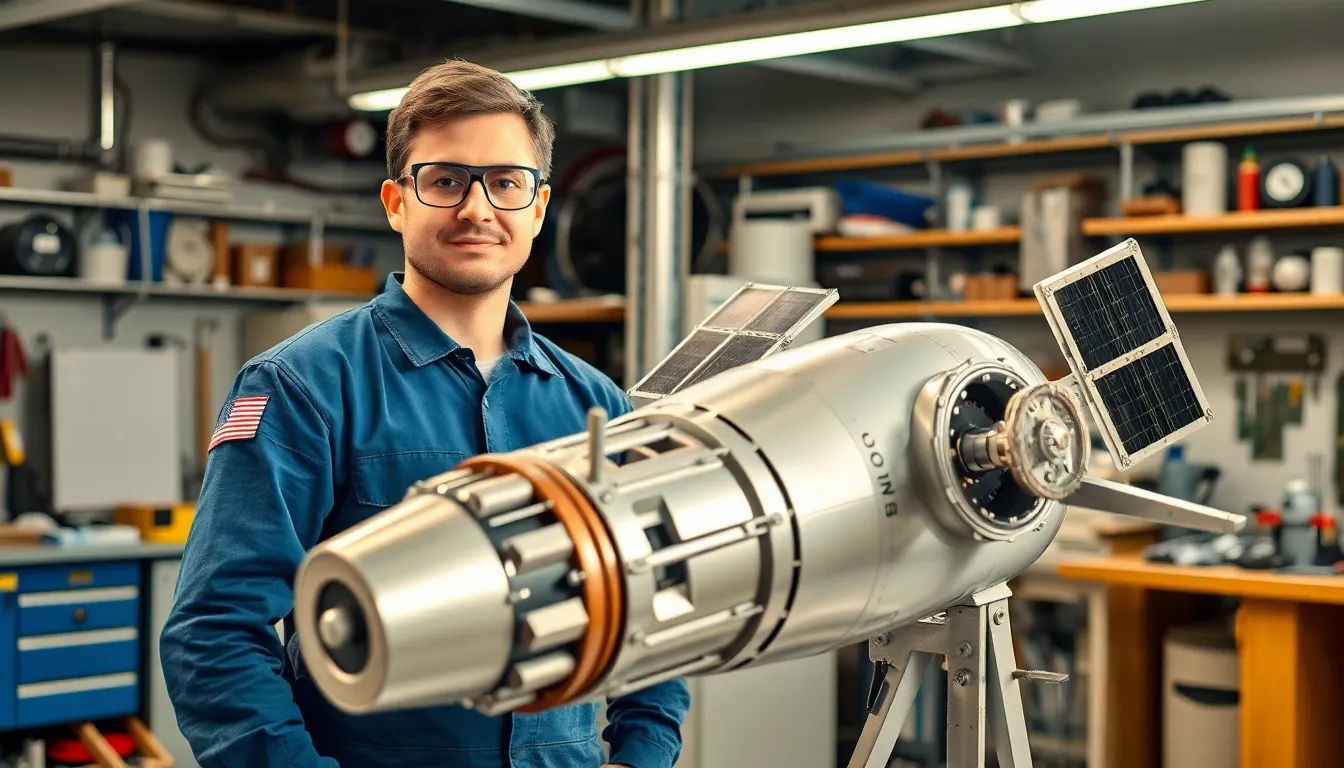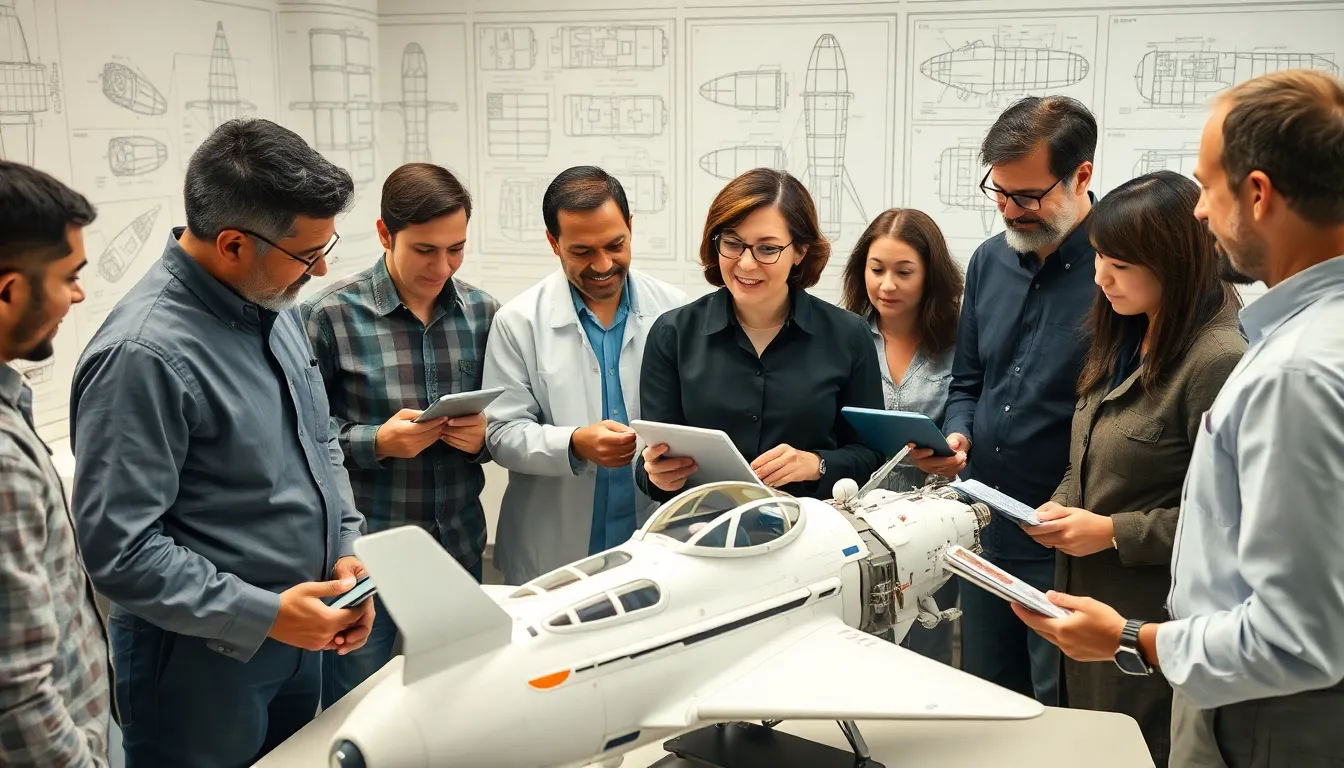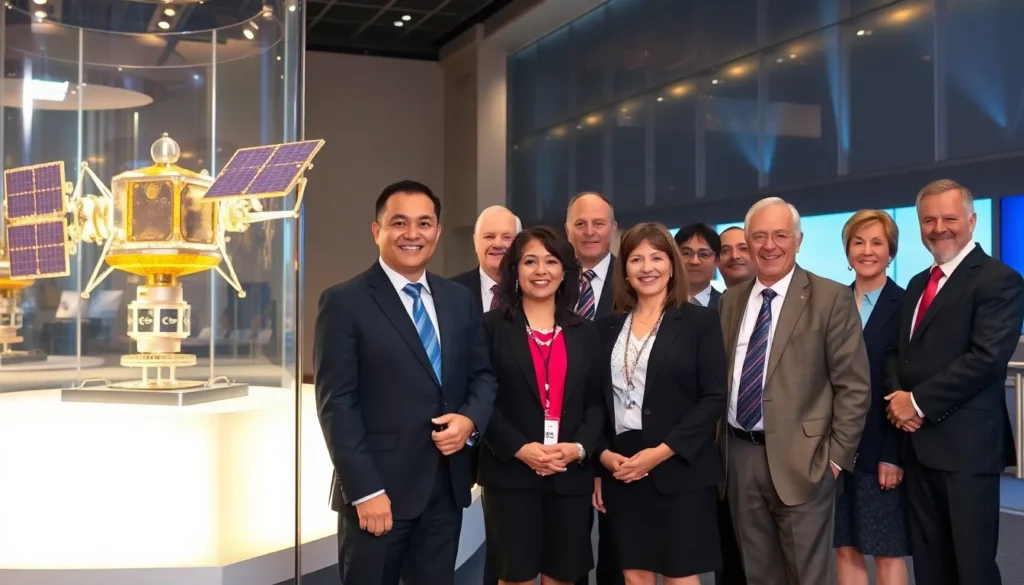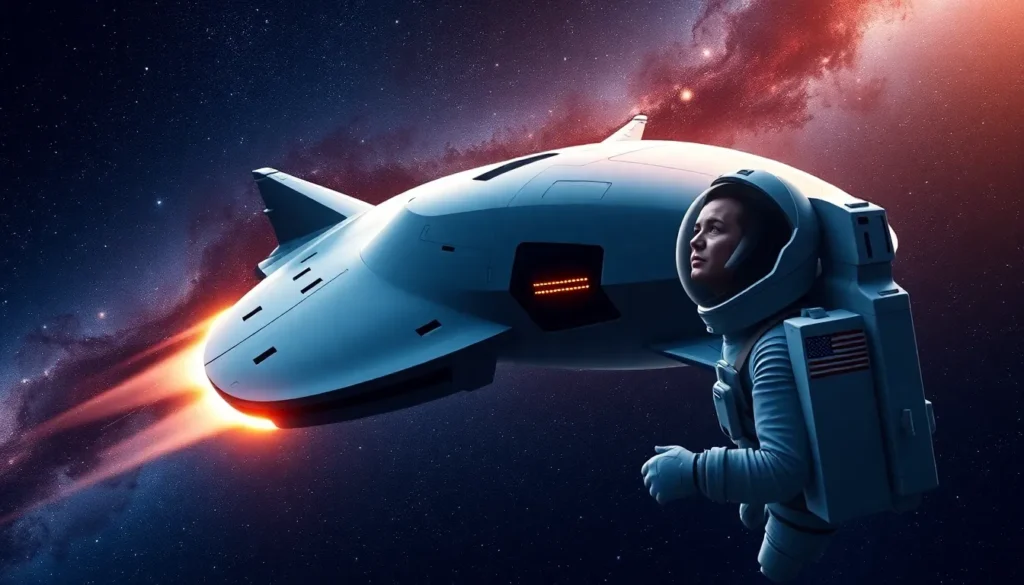Imagine a world where humans zip around the cosmos like it’s the neighborhood coffee shop. Spacecraft engineering makes that dream a reality, turning wild fantasies into meticulously crafted machines that defy gravity and logic. It’s not just about slapping some metal together and hoping for the best; it’s a blend of creativity, precision, and a dash of rocket science magic.
Table of Contents
ToggleOverview of Spacecraft Engineering
Spacecraft engineering involves designing, constructing, and testing vessels meant for travel beyond Earth’s atmosphere. This field encompasses various disciplines, requiring collaboration among engineers, scientists, and technicians to achieve space exploration goals.
Definition and Scope
Spacecraft engineering refers to the multidisciplinary approach that encompasses systems engineering, design, and operations of space vehicles. Engineers tackle propulsion systems, structural integrity, electrical power systems, thermal control, and avionics. This field also includes the integration of scientific instruments for research and exploration. Various types of spacecraft exist, including satellites, crewed spacecraft, and interplanetary probes. Each type demands specific engineering solutions tailored to its unique operational demands.
Importance in Modern Space Exploration
Modern space exploration relies heavily on spacecraft engineering to enable ambitious missions. Engineers design spacecraft capable of withstanding harsh conditions of space and launching technologies that facilitate human and robotic exploration. Innovations in this field enhance our understanding of celestial bodies, support satellite communications, and pave the way for future missions, such as potential human settlements on Mars. Technology advances continue to drive down mission costs and increase the reliability of spacecraft, supporting national and commercial space programs. This discipline ensures humanity’s ongoing quest to explore beyond Earth.
Key Components of Spacecraft

Key components of spacecraft play a critical role in their overall performance and reliability. Engineers must pay meticulous attention to each element to ensure successful missions.
Structural Framework
Structural frameworks provide the body of the spacecraft, ensuring safety and durability in harsh environments. Materials like aluminum and carbon fiber are commonly used due to their lightweight and strength characteristics. These frameworks manage not only the loads during launch and space travel but also protect sensitive internal components. Engineers design structures to withstand extreme conditions such as vacuum, radiation, and temperature variations. Stress testing techniques validate these designs, assuring functionality throughout the mission duration.
Propulsion Systems
Propulsion systems drive spacecraft forward, utilizing various technologies to achieve required thrust. Chemical rockets remain the most prevalent choice, effectively converting chemical energy into mechanical energy. Electric propulsion systems have gained traction, offering higher efficiency over long durations. Options like ion engines or Hall effect thrusters provide precise maneuvering capabilities. Designers prioritize propulsion configurations based on mission profiles, considering weight, fuel efficiency, and thrust needs. Each system must integrate seamlessly with the spacecraft’s other components for optimal performance.
Power Supply Systems
Power supply systems are essential for operating all spacecraft functions. Solar arrays often generate electricity, converting sunlight into usable power. Batteries store energy for use during periods without direct sunlight or for peak power demands. Fuel cells can also contribute by producing electricity through chemical reactions. Engineers strategically position these systems to maximize efficiency and reliability. Regular monitoring and management of power distribution maintain performance throughout the mission, ensuring all instruments and systems operate smoothly.
Design and Development Process
The design and development process encompasses multiple stages, ensuring successful spacecraft creation and operation.
Conceptual Design
Conceptual design initiates the spacecraft engineering process. Engineers and designers collaborate to define mission objectives, requirements, and constraints. They create initial sketches and computer simulations to visualize concepts. Various technologies and materials undergo consideration for optimal performance. Feasibility studies assess costs, risks, and timelines, enabling focused decision-making. Essential interactions between subsystems get identified to enhance functionality. Innovative ideas emerge while refining designs to align with mission goals.
Prototyping and Testing
Prototyping and testing validate conceptual designs through practical evaluation. Engineers construct prototypes to assess performance against specifications. Various tests, including thermal vacuum and vibration testing, simulate space conditions. These evaluations identify design flaws and areas needing improvement. Feedback from testing leads to iterative refinements, enhancing reliability and functionality. Testing reduces uncertainties before final assembly, ensuring the spacecraft can withstand harsh environments. Knowledge gained from prototypes directly contributes to the spacecraft’s readiness for launch.
Final Assembly and Launch
Final assembly and launch mark the concluding phase of the spacecraft development process. Engineers systematically assemble components, ensuring precise integration of systems. Quality checks occur at each stage to maintain high standards. Once assembled, the spacecraft undergoes comprehensive pre-launch testing. This phase confirms all systems operate cohesively. Launch preparations include coordinating with space agencies and tracking organizations. Following successful checks, the spacecraft is transported to the launch site, ready for its mission beyond Earth’s atmosphere.
Challenges in Spacecraft Engineering
Spacecraft engineering faces numerous challenges that impact the design, development, and launch of vehicles intended for space exploration. Addressing these difficulties requires innovative solutions and collaboration among experts.
Technical Limitations
Technical limitations significantly influence spacecraft design and functionality. Engineers encounter constraints related to materials, propulsion, and power systems. Advanced materials must withstand extreme temperatures and vacuum conditions. Propulsion options vary in efficiency and thrust, often requiring trade-offs between speed and fuel consumption. Power systems, including solar arrays, must generate sufficient energy while being lightweight and compact. Engineers continually seek to optimize these systems for enhanced performance.
Budgetary Constraints
Budgetary constraints shape the scope of spacecraft missions. Funding for space exploration varies, influencing project priorities and timelines. Limited budgets may necessitate cutting advanced features or reducing mission objectives. Organizations often rely on government grants, private investment, or international partnerships to secure funding. Cost overruns are common, leading to delays and necessitating budgetary adjustments. Engineers must prioritize essential components to ensure mission success within established financial limits.
Environmental Considerations
Environmental considerations play a critical role in spacecraft engineering. Engineers must design vehicles that minimize detrimental impacts on Earth’s atmosphere and space environments. Space debris poses significant risks to operational spacecraft; thus, engineers focus on creating debris mitigation strategies. Additionally, rocket launches contribute to atmospheric pollution, prompting the exploration of cleaner propulsion technologies. Ensuring that spacecraft operations align with sustainability goals has become increasingly important in modern engineering practices.
Future Trends in Spacecraft Engineering
Future trends in spacecraft engineering highlight a progressive shift toward advanced technologies, sustainable methods, and collaboration across sectors.
Advancements in Technology
Emerging technologies continue to reshape spacecraft engineering. Innovations in artificial intelligence boost automation during spacecraft operations and maintenance. Furthermore, 3D printing enhances production capabilities, enabling rapid prototyping and reducing material waste. Flexible designs play a crucial role in adapting spacecraft to various missions. In addition, advancements in propulsion systems, such as ion and nuclear thermal propulsion, improve efficiency and reduce travel time to distant destinations. These technologies ensure payloads arrive quicker and more safely, significantly impacting future exploratory missions.
Sustainable Space Travel
Sustainable methods in spacecraft engineering focus on minimizing environmental impacts. Engineers prioritize cleaner propulsion technologies to reduce emissions. Solar power technologies increase efficiency while providing a renewable energy source for spacecraft. Additionally, strategies for debris mitigation, like designing spacecraft with deorbiting capabilities, tackle space congestion concerns. Enhancing recycling and repurposing materials used in spacecraft contributes to reducing waste. These efforts align with global sustainability goals, ensuring long-term viability for space exploration.
Collaboration with Private Sector
Collaboration with the private sector drives innovation in spacecraft engineering. Partnerships between government agencies and commercial companies accelerate development timelines and reduce costs. Private firms now contribute advanced technologies and expertise, pushing the industry forward. Notable examples include SpaceX and Blue Origin, which have revolutionized launch systems and reusability practices. Open communication between sectors fosters a shared vision for future exploration and enhances mission capabilities. The synergistic relationship produces innovative solutions that benefit both national and commercial objectives.
Spacecraft engineering stands at the forefront of human exploration and innovation. As engineers push the boundaries of technology they’re not just building vessels; they’re crafting pathways to the stars. The integration of advanced materials and sustainable practices ensures that future missions are not only feasible but also environmentally responsible.
Collaboration between public and private sectors fosters a dynamic environment for growth and creativity. With each advancement in propulsion systems and design methodologies the dream of seamless space travel inches closer to reality. The future of spacecraft engineering promises exciting possibilities that will redefine humanity’s relationship with the cosmos.




